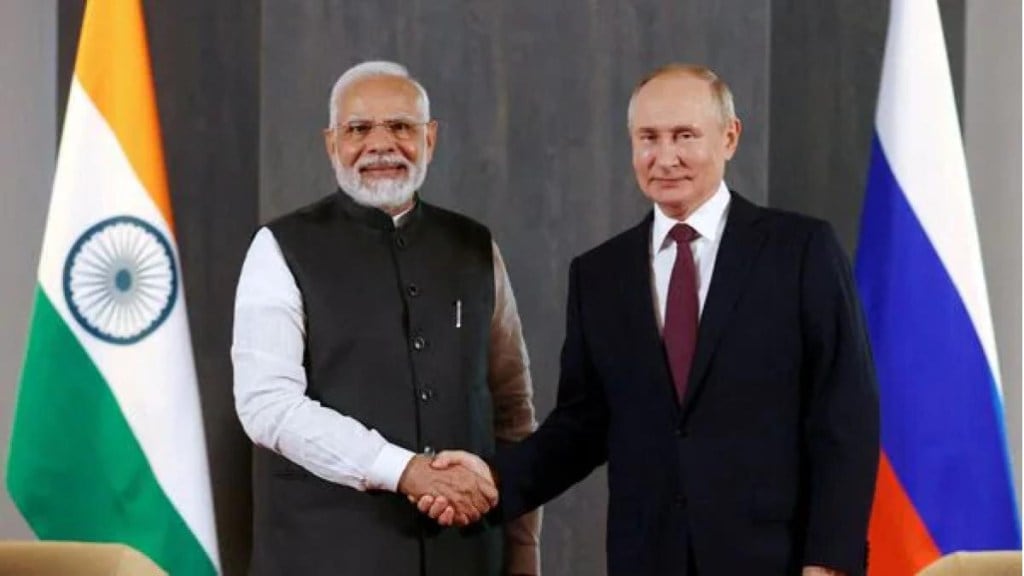India’s defence strategy remains a complex balancing act between deep-rooted ties with Russia and a growing partnership with the United States. While the recent approval of a US$52.8 million deal for Anti-Submarine Warfare (ASW) sonobuoys from the US marks a significant step in Indo-US military cooperation, India’s reliance on Russian-origin equipment remains pivotal to its defence capabilities.
US Anti-Submarine Warfare Sonobuoys Deal
During Defence Minister Rajnath Singh’s visit to Washington, the US approved a government-to-government deal for the sale of advanced ASW sonobuoys, which will enhance the Indian Navy’s capabilities. These sonobuoys are essential for detecting and tracking submarines, and they will be integrated with the MH-60R “Romeo” helicopters, which India procured from the US last year under the Foreign Military Sales (FMS) route.
The US Department of Defence emphasized that this deal aligns with its broader foreign policy and national security objectives, aiming to bolster the US-India strategic relationship and enhance regional security in the Indo-Pacific and South Asia. The principal contractors, Sparton Corporation and Undersea Sensor Systems Inc., will supply the sonobuoys, with no known offset agreements tied to the sale.
Strengthening Indo-US Defence Cooperation
The ASW sonobuoys deal is indicative of India’s ongoing efforts to diversify its defence procurement sources. As reported previously by FinancialExpress.com over recent years, India has increasingly turned to the US for sophisticated military hardware, including C-17 Globemaster III and C-130J Super Hercules aircraft, Apache and Chinook helicopters, and P-8I maritime reconnaissance aircraft. The induction of these platforms has significantly enhanced India’s strategic and tactical capabilities, particularly in maritime security and special operations.
However, despite these advancements, the partnership with the US has primarily remained transactional, with limited technology transfer compared to India’s long-standing relationship with Russia.
The Enduring Russian Influence
India’s military landscape is deeply intertwined with Russian-origin platforms, which continue to form the backbone of its defence forces. Over the past six decades, India has not only procured but also license-produced a range of Russian military equipment. This includes T-90 tanks, Sukhoi 30 MKI jets, and BrahMos missiles, the latter being a joint development that India now exports.
Moreover, Russia’s willingness to share critical technologies that other nations are reluctant to export has cemented its role as a key defence partner. For instance, Russia played a pivotal role in developing India’s nuclear submarine capabilities by guiding the miniaturization of reactors for INS Arihant and leasing nuclear-powered submarines to India. Additionally, the Indian Navy’s INS Vikramaditya, a 45,000-tonne aircraft carrier, was a former Russian warship transformed to meet India’s strategic needs.
Russia’s influence extends beyond mere procurement. The Stockholm International Peace Research Institute (SIPRI) reported earlier this year that India remains the world’s largest importer of weapons, with Russia as its primary supplier for more than 30 years. Despite the US’ Countering America’s Adversaries Through Sanctions Act (CAATSA), which imposes sanctions on countries with significant defence ties to Russia, India has skilfully navigated these challenges, underscoring the depth of its reliance on Russian military equipment.
A Delicate Balance
India’s defence strategy reflects a careful balance between leveraging new partnerships and sustaining historical ties. While the US has emerged as a key supplier of advanced military platforms, India’s reliance on Russian-origin equipment remains irreplaceable, particularly in critical areas like nuclear submarines, air defence systems, and combat aircraft.
The recent sonobuoys deal with the US signifies India’s intent to modernize and diversify its military capabilities, yet it also highlights the transactional nature of Indo-US defence ties. In contrast, the Russia-India relationship, characterized by extensive technology transfer and co-development, remains foundational to India’s defence posture.
Bottomline
As India continues to enhance its military capabilities through strategic partnerships, it must navigate the complexities of its relationships with both the US and Russia. The sale of ASW sonobuoys from the US is a step forward in Indo-US defence cooperation, but India’s reliance on Russian platforms underscores the enduring importance of its historical alliances. Balancing these relationships will be key to maintaining India’s strategic autonomy and ensuring its long-term security interests.
